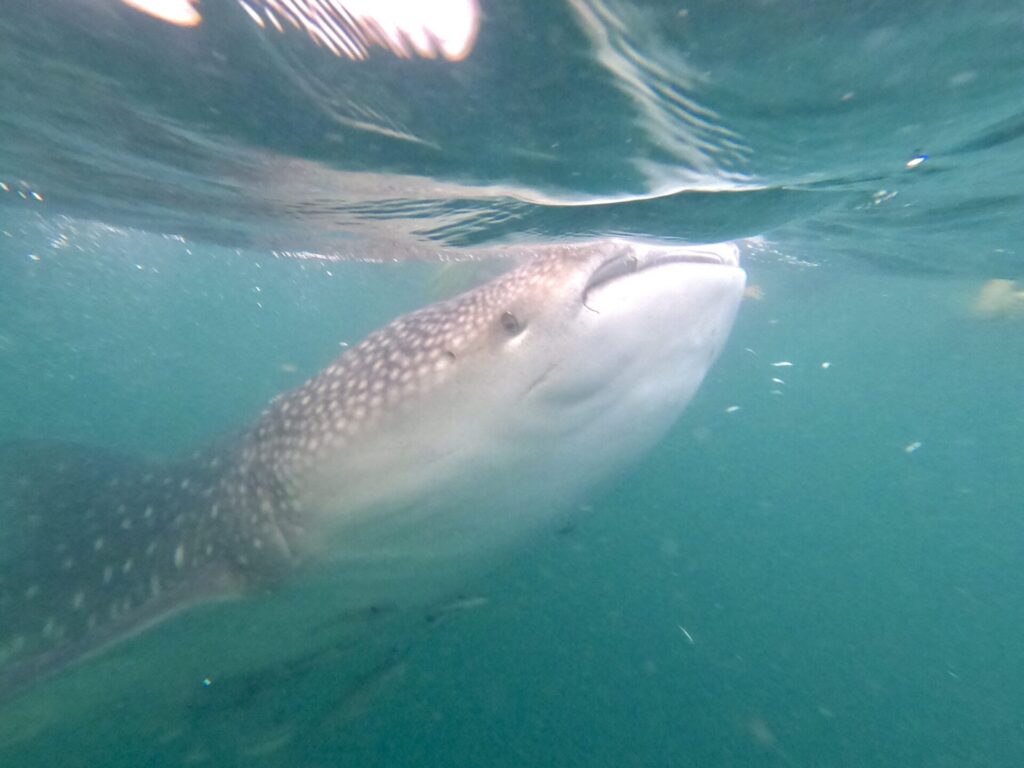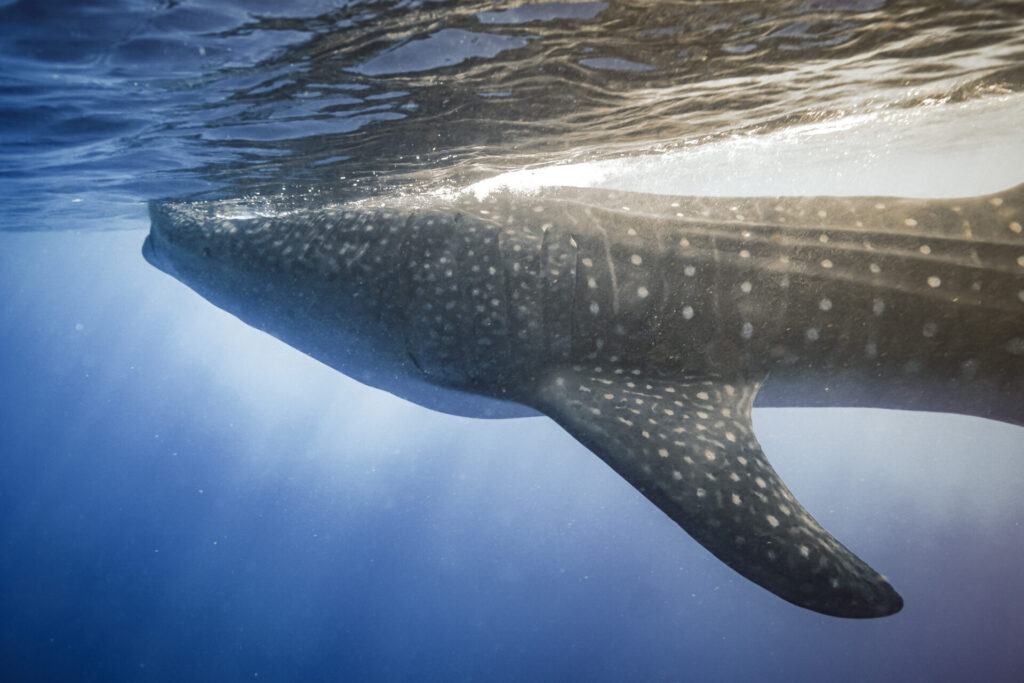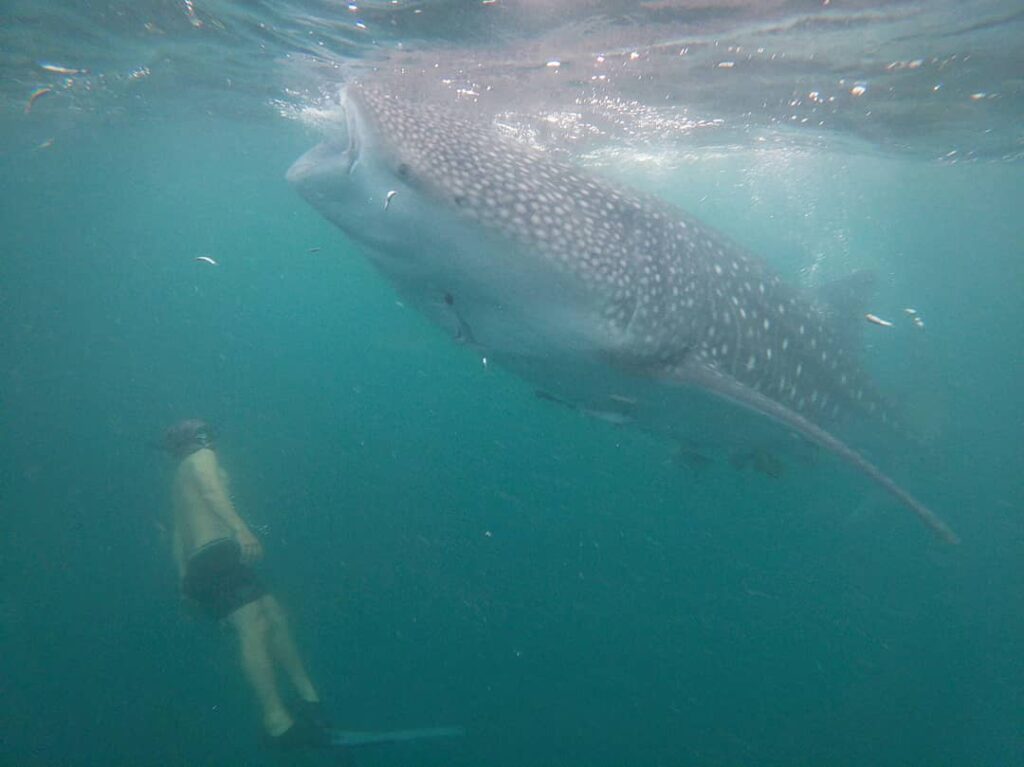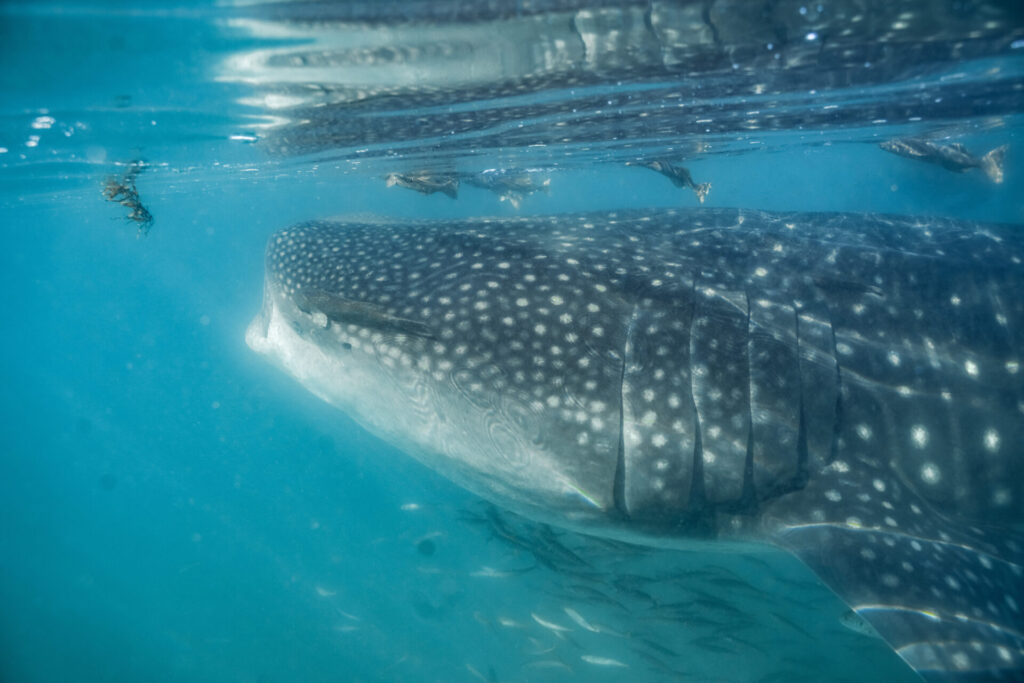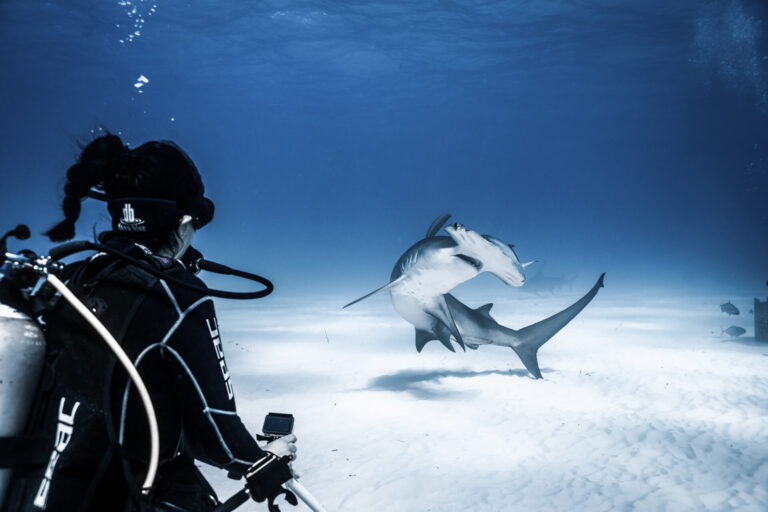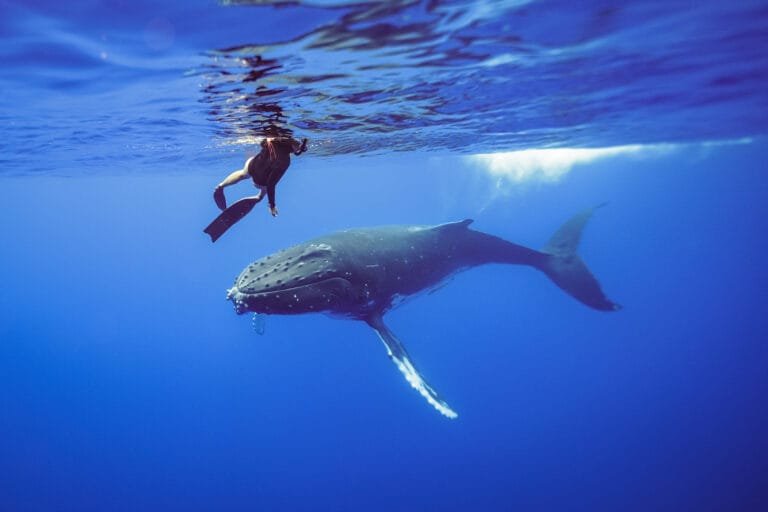Pro-Tips for Swimming with Whale Sharks
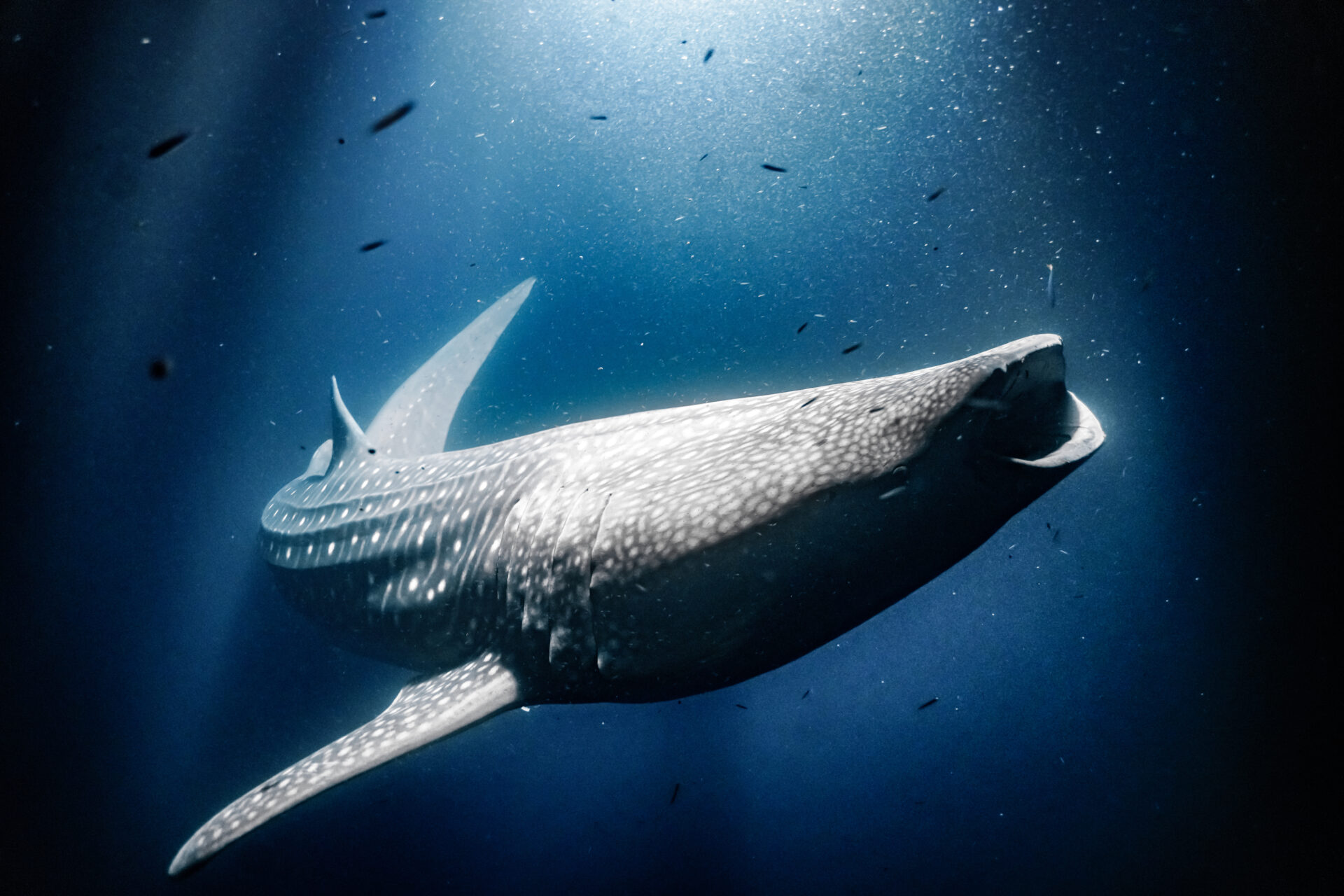
Swimming with whale sharks is a once-in-a-lifetime experience that brings you face-to-face with the gentle giants of the ocean. These magnificent creatures can grow up to 40 feet long, and sharing the water with them is an exhilarating experience. So long as you’ you can swim, you can swim with a whale shark. To make the most of your whale shark adventure, here are six pro-tips to ensure a safe and enjoyable experience.
1. Hire a Reputable Company
The first step to a successful whale shark swim is booking with a knowledgeable company that:
- Follows all local laws and respects the wildlife.
- Employs knowledgeable guides who understand whale shark behavior.
- Gives a thorough safety briefing about swimming with whale sharks.
Do your research by reading reviews on TripAdvisor or from reputable travel guidebooks (think Lonely Planet). Reputable operators will give you the best chance to have a great encounter while respecting the wildlife.
2. Be a Confident Swimmer
Whale shark swims typically occur in open water, where conditions can include waves, currents, and varying visibility. While you don’t need to be an Olympic swimmer, being comfortable in the water is essential. Practice snorkeling in calm waters beforehand to build your confidence.
Many operators provide life vests or flotation devices (some countries require you to wear a lifejacket), but being able to swim independently allows you to maneuver better and fully enjoy the experience.
3. Swim Fast (Unless the Whale Shark is Vertical Feeding)
Despite their massive size, whale sharks move surprisingly fast through the water. When they’re swimming horizontally, their graceful movements may appear slow, but keeping up can be challenging. To keep pace:
- Swim efficiently using fins to propel yourself forward.
- Focus on staying parallel to the whale shark rather than directly behind it (or in front of it), as this reduces water resistance.
However, if the whale shark is vertical feeding (positioned upright while filtering plankton), it will likely stay in one spot for longer periods, giving you a chance to observe without the need for speed.
4. Be Patient
Spotting a whale shark often requires time, persistence, and a little luck. These animals are wild and unpredictable, so there’s no guarantee you’ll find one right away.
I remember my first attempt at swimming with whale sharks in the Maldives. After hours of searching, we didn’t see a single one. It can be disheartening if you come up empty handed. .
5. Wear an Appropriate Swimsuit or Exposure Suit
Whale shark swims take place in the open ocean, where you might encounter jellyfish, sea lice, or other stinging organisms. Protect yourself by wearing a swimsuit or exposure suit that covers your skin (I personally love Waterlust):
- Rash guards and full-length swimsuits are great for avoiding minor stings and sunburn.
- If the water is cooler, consider a lightweight wetsuit for added insulation.
Being prepared ensures you stay comfortable and focused on the experience rather than any unexpected discomfort.
6. Take Your Sea Sickness Meds (If Needed)
7. Bring a GoPro or a Waterproof Housing for Your Phone
Capture the magic of swimming with whale sharks by bringing a GoPro or a waterproof housing for your phone.
- Make sure your GoPro or phone is securely attached to a float or wrist strap to prevent losing it in the ocean.
- Test your equipment beforehand to ensure it’s working properly and ready to capture those unforgettable moments.

